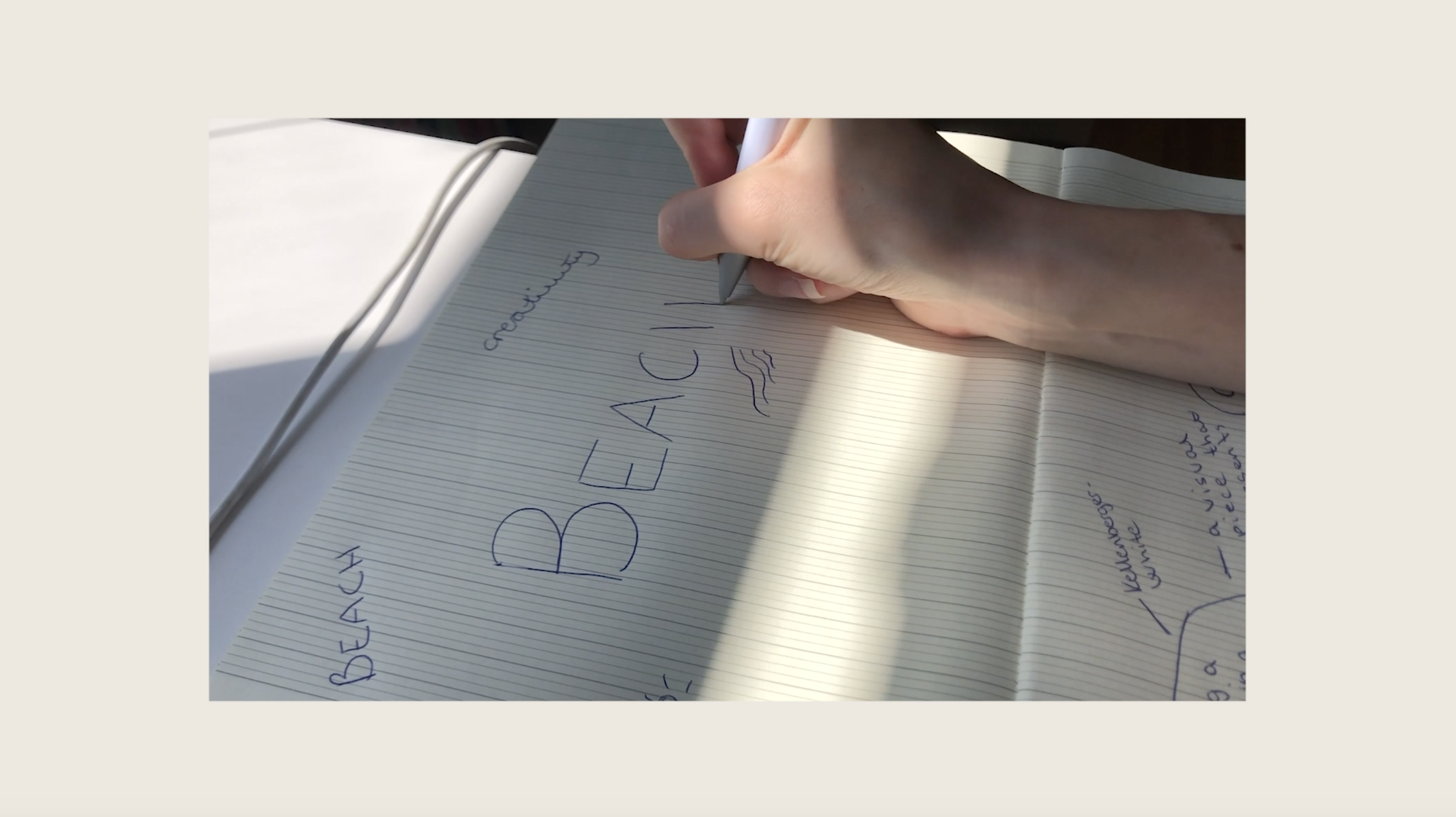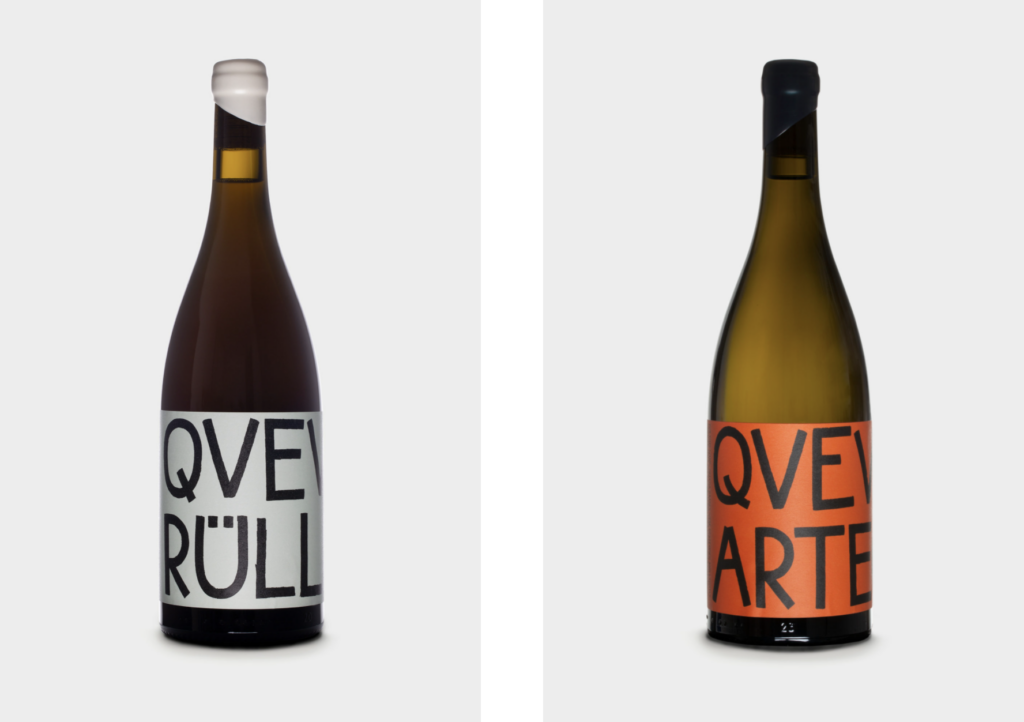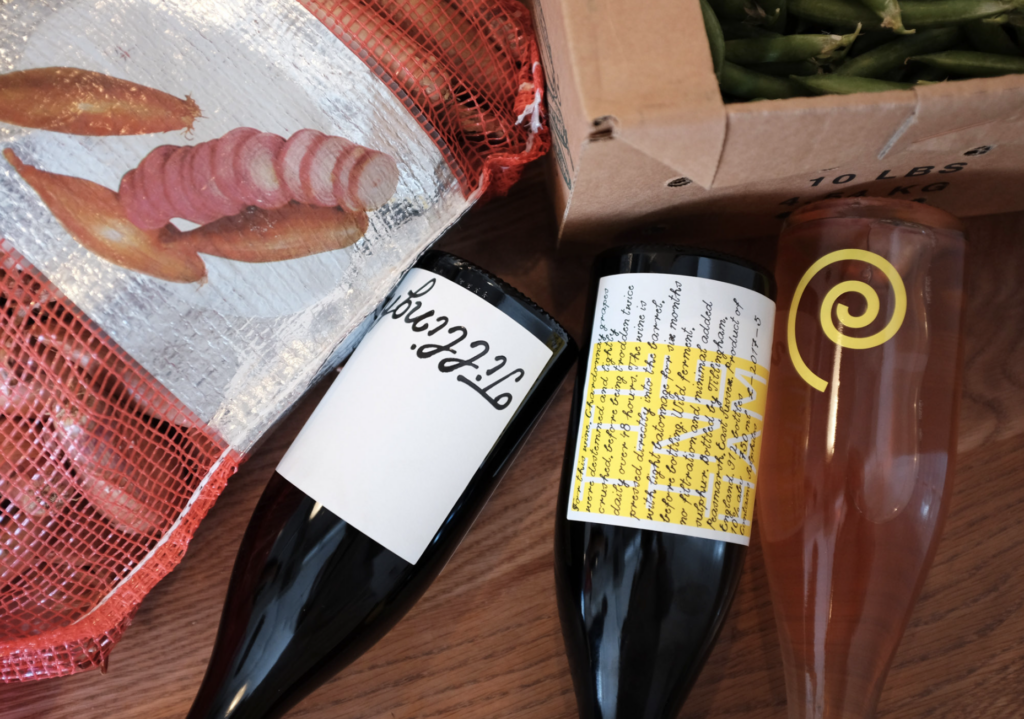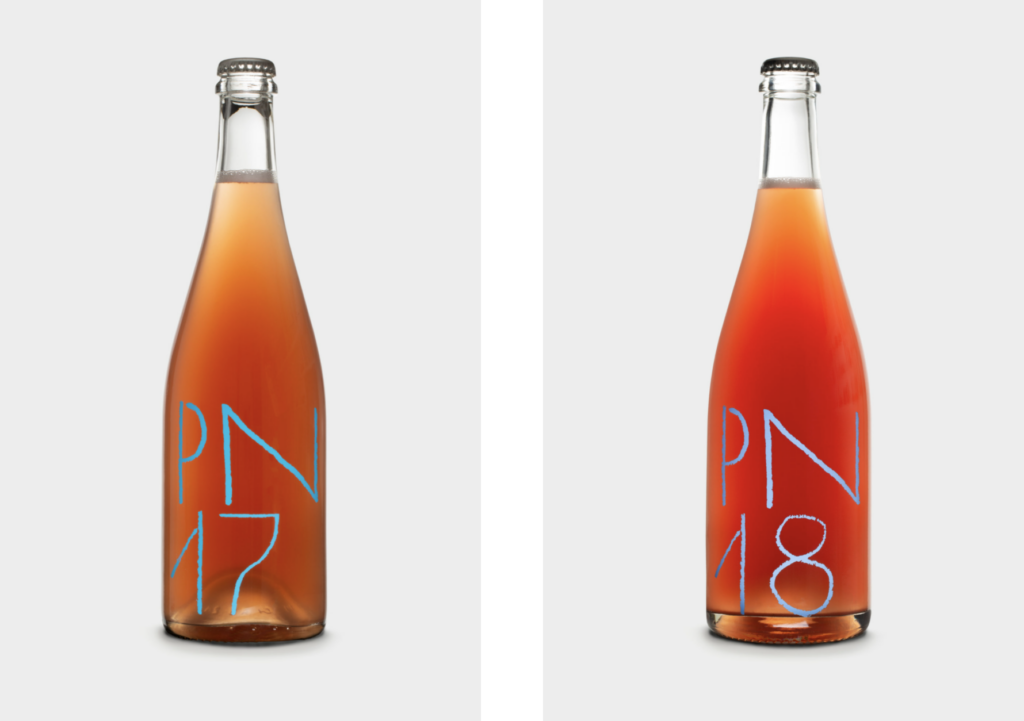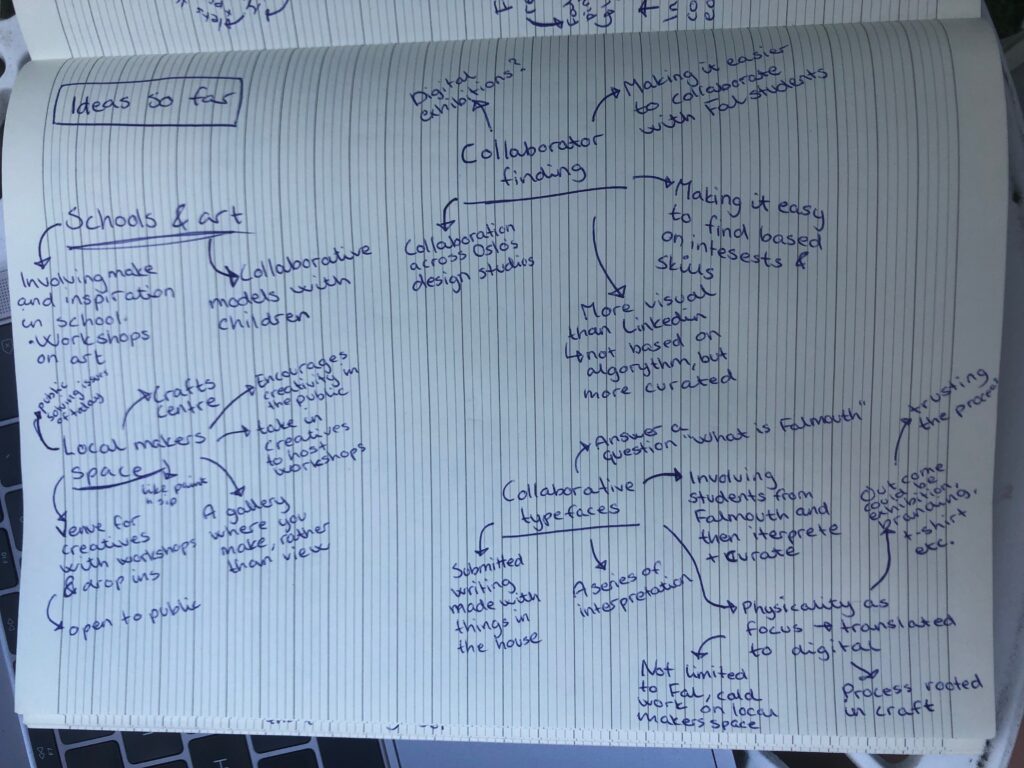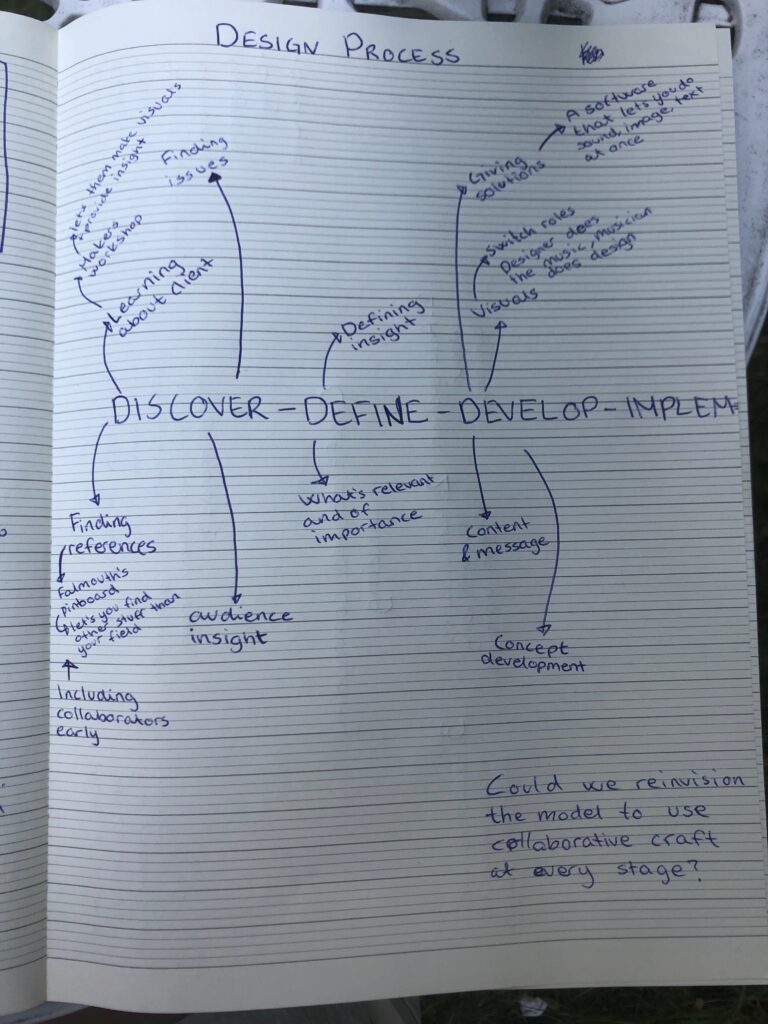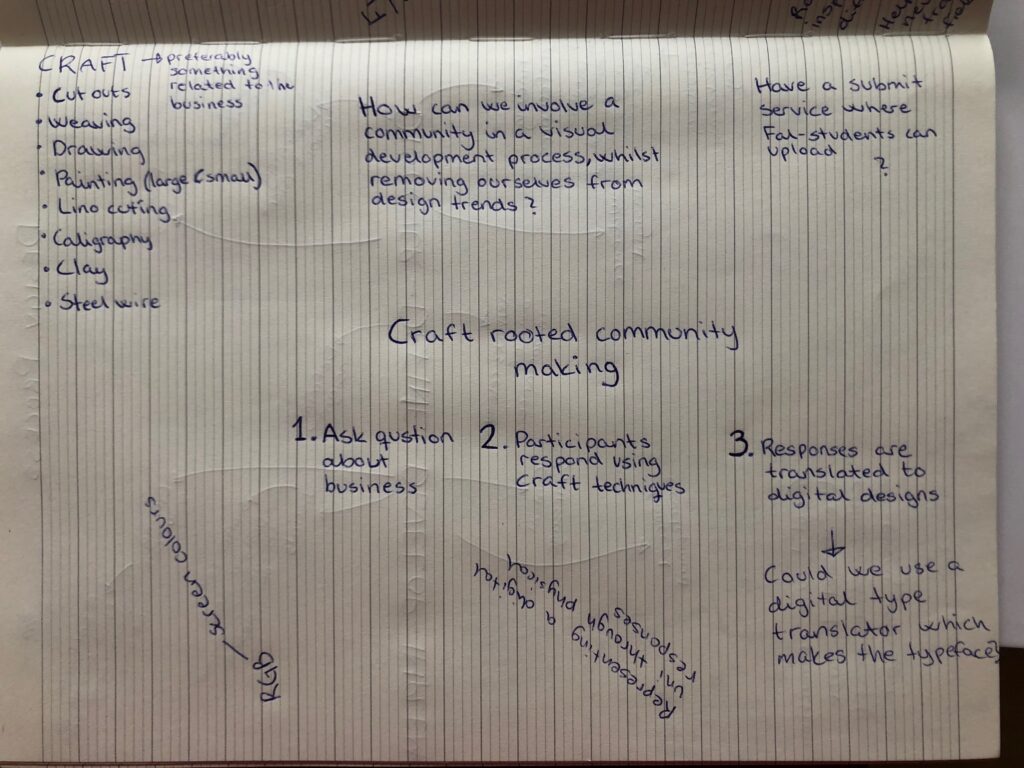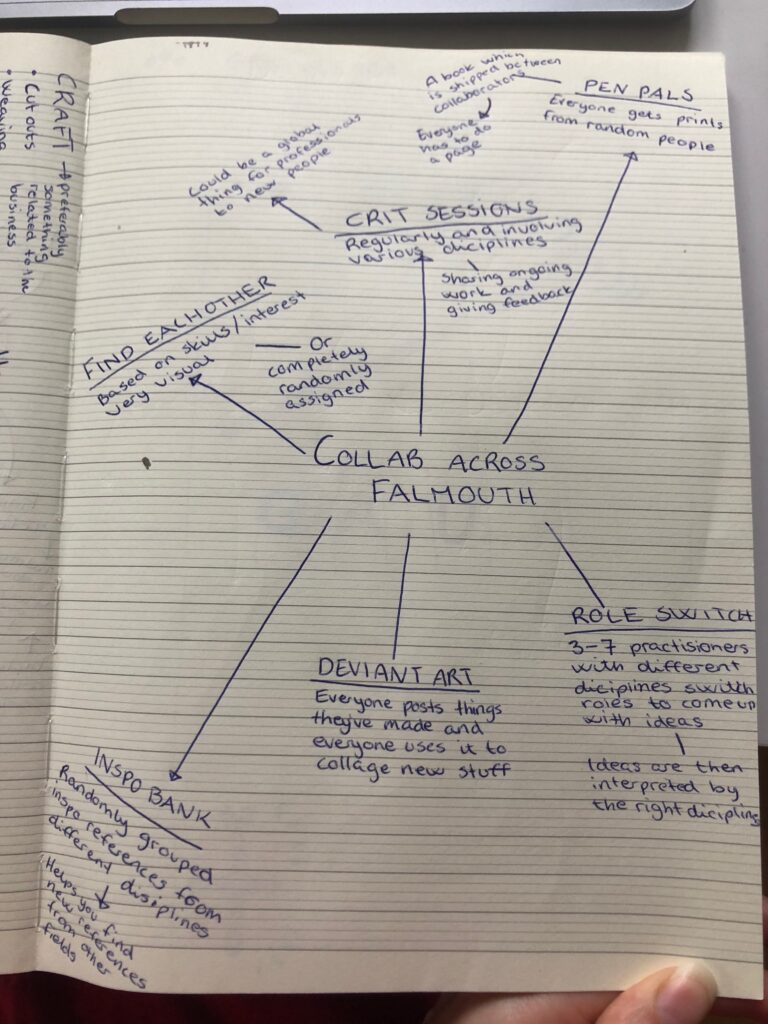Lecture notes
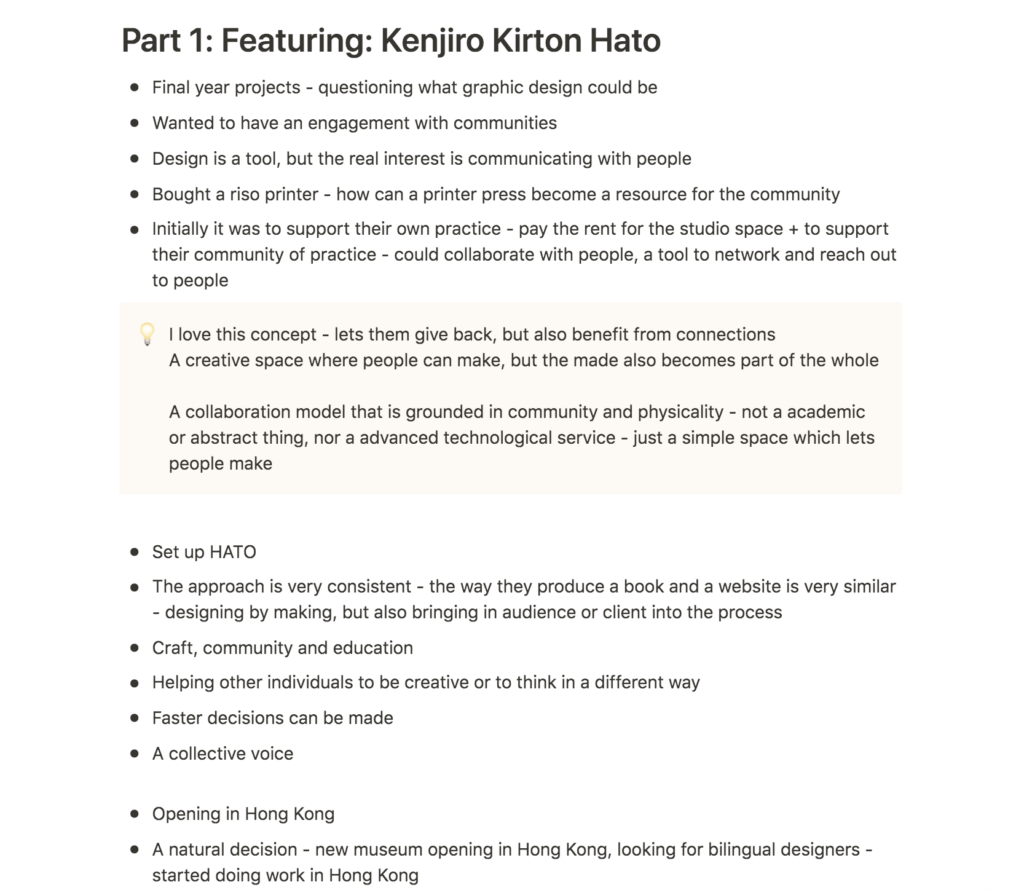
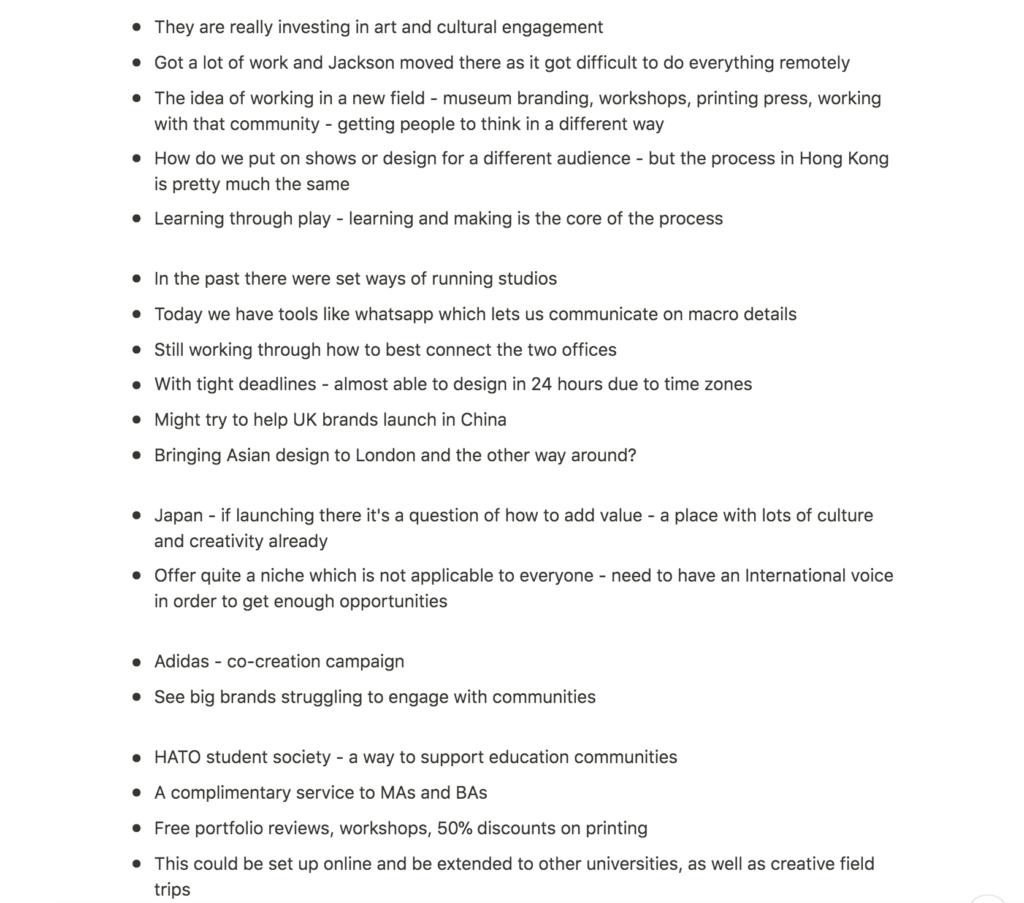

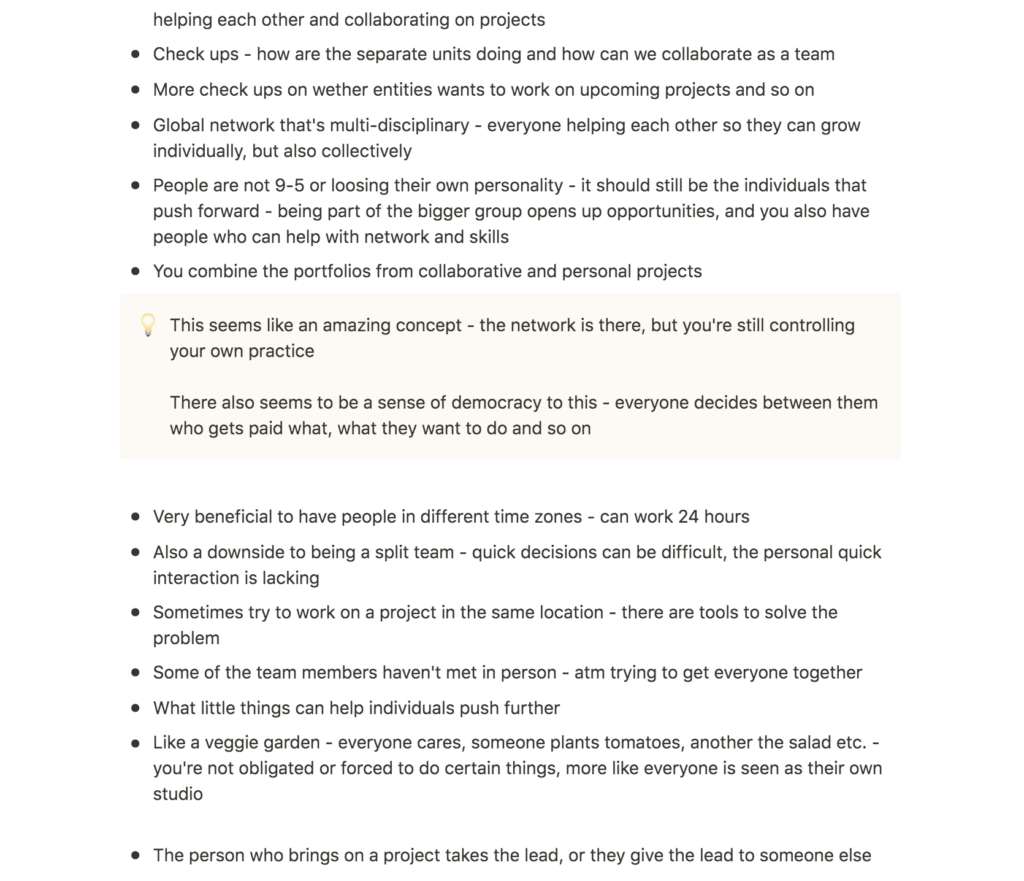

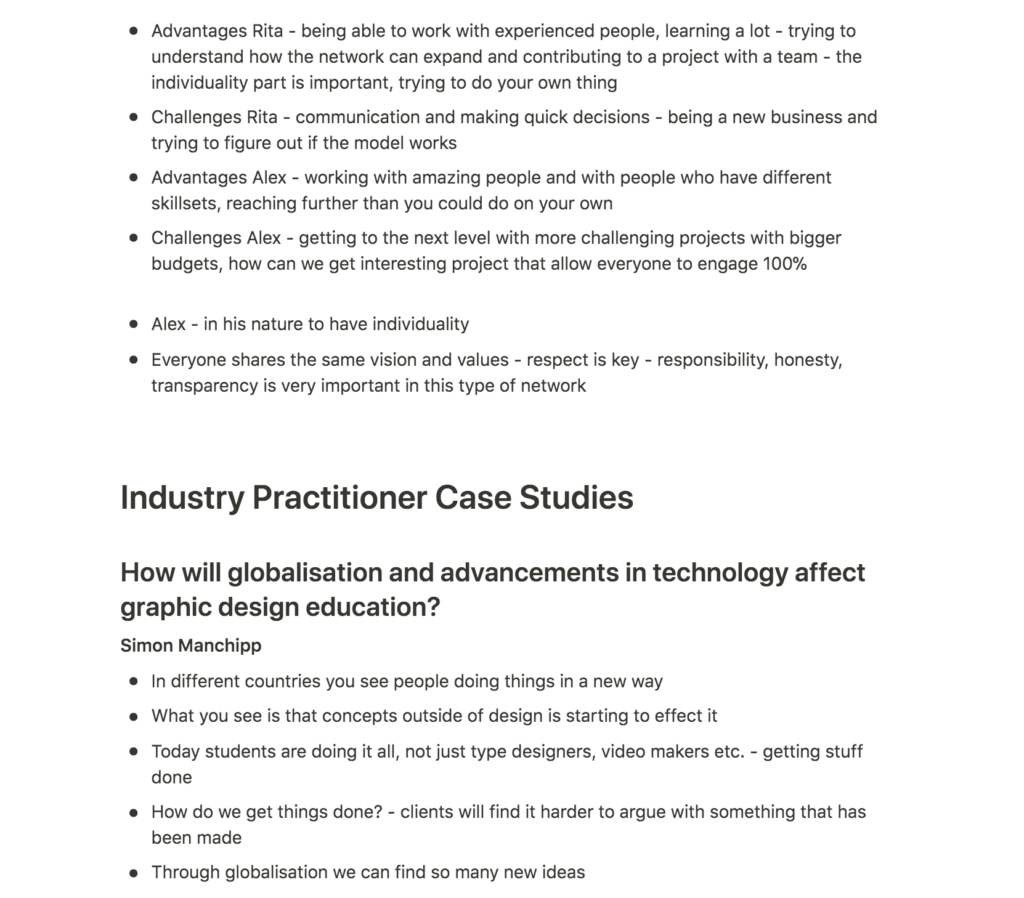
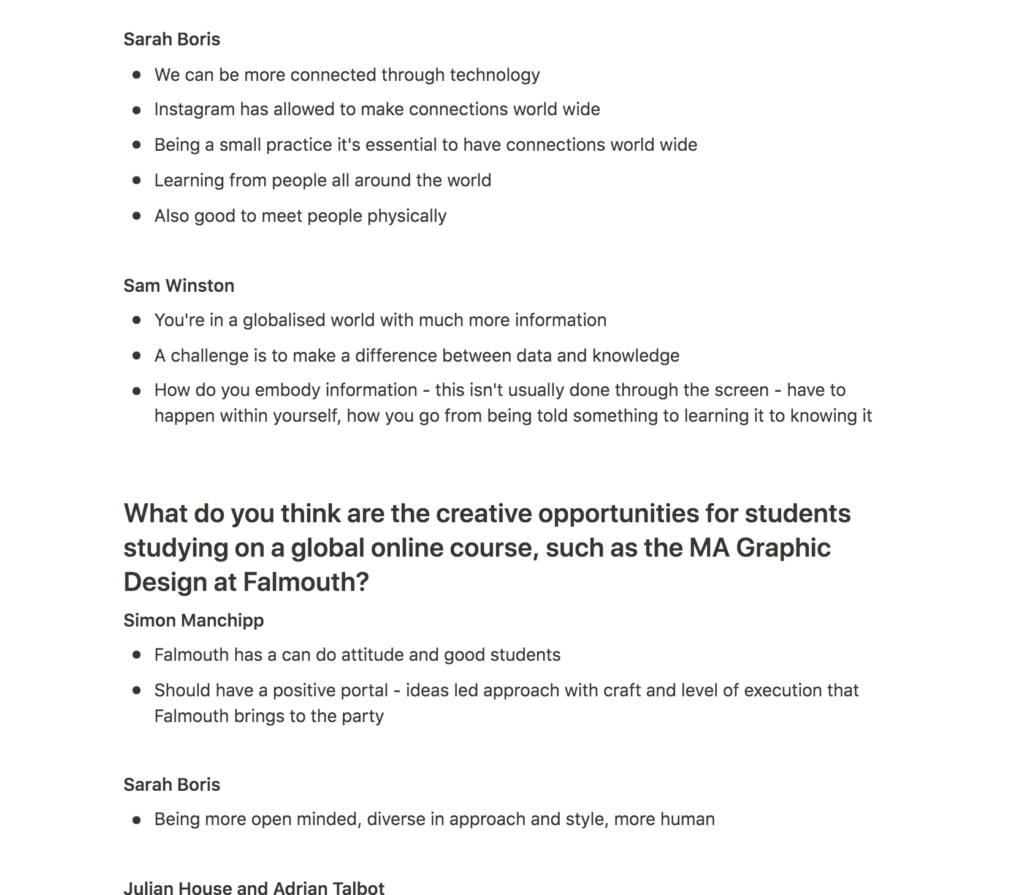
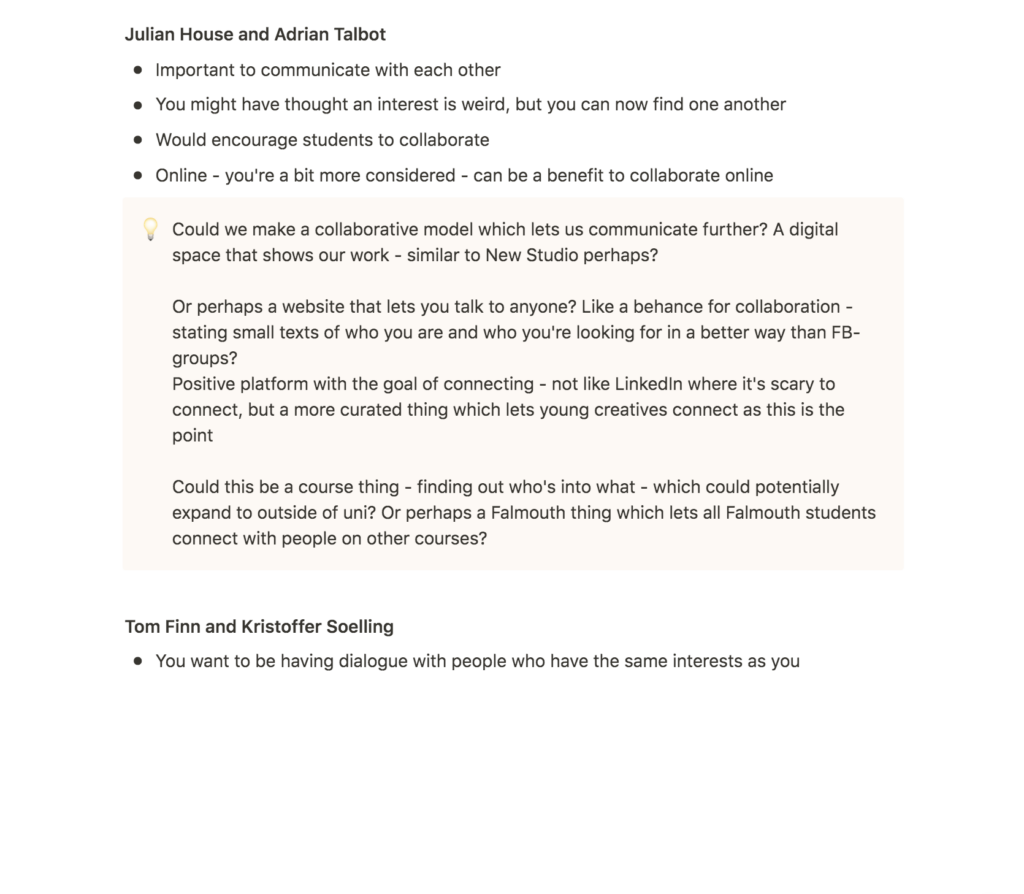
Lecture reflections
Kenjiro Kirton: Hato
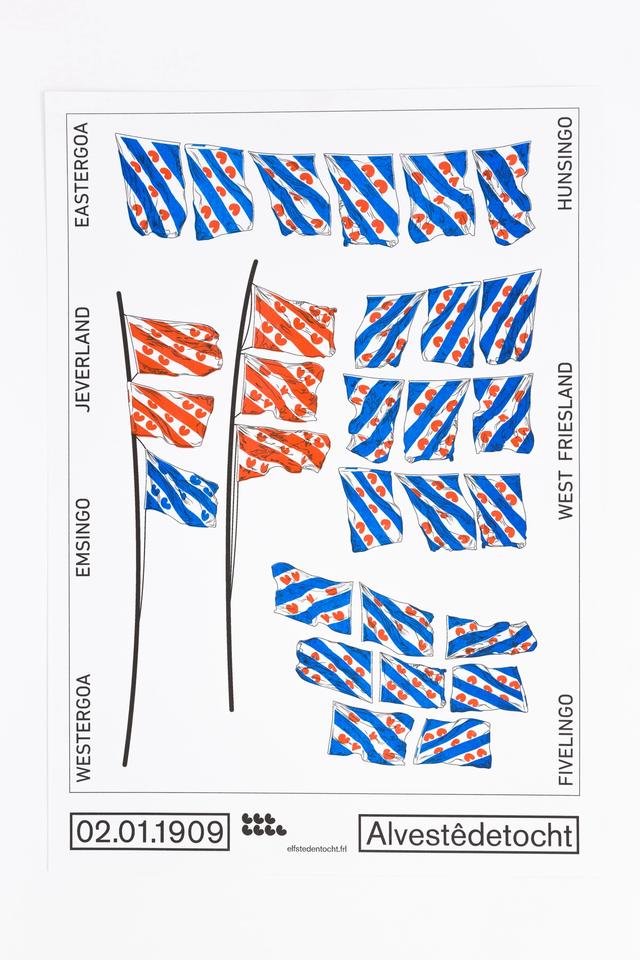
I was very inspired by Hato’s printing press, which gave a space to their creative community (Alec Dudson and Kenjiro Kirton, 2021). The printing press didn’t only allow them to give back to society, it also let them make connections and do collaborations (Alec Dudson and Kenjiro Kirton, 2021). The space is a place where people can come together and make, but what I really love about it is that the made becomes part of the whole. What’s made becomes the printing press initiative outwards.
I also love that this collaboration model is grounded in community and physicality. It’s not an academic or abstract thing, but rather a simple physical tool.
The Hato student society was also great to hear about, particularly in light of my podcast last week. One way of creating a collaboration model would be to follow my expert insight and look at collaborative models for introducing art to school children at an early age. By getting them to make and learn about art history, they could produce a collaborative exhibition, or a more peculiar artefact like Hato’s school bus.
Axel Peemoeller and Rita Matos: New Studio

New Studio had an interesting business model, which I think I could have really enjoyed. The model also made me wonder if we could set up something similar across the Falmouth network. This could be an external space which lets clients find us, or it could be a collaborative space which lets us collaborate across courses.
It could also be interesting to look at how one might connect younger and older designers, in order from them to learn from each other, like Rita discussed (Alec Dudson, Axel Peemoeller, and Rita Matos, 2021). This could for example be a collaborative event across Oslo, where all design studios, freelancers and students could join.
Industry Practitioner Case Studies
House and Tolbot’s insight on the importance of collaborating with each other on a digital course made me slightly worried, as I haven’t really done this (unless you count feedback and lighter discussions). This made me wonder if we could create a collaborative model that could help us collaborate further, perhaps across courses as reflected upon above.
Maybe all Falmouth Flexible students could do a collaborative exhibition? Or maybe we could set up a digital space which lets us find each other? Although we at graphic design see each other’s work, it also struck me that I don’t actually know what sort of design and references others are into. Perhaps another idea would be to create a tool which lets us state our interests, and that lets us collaborate based on these?
Resource notes
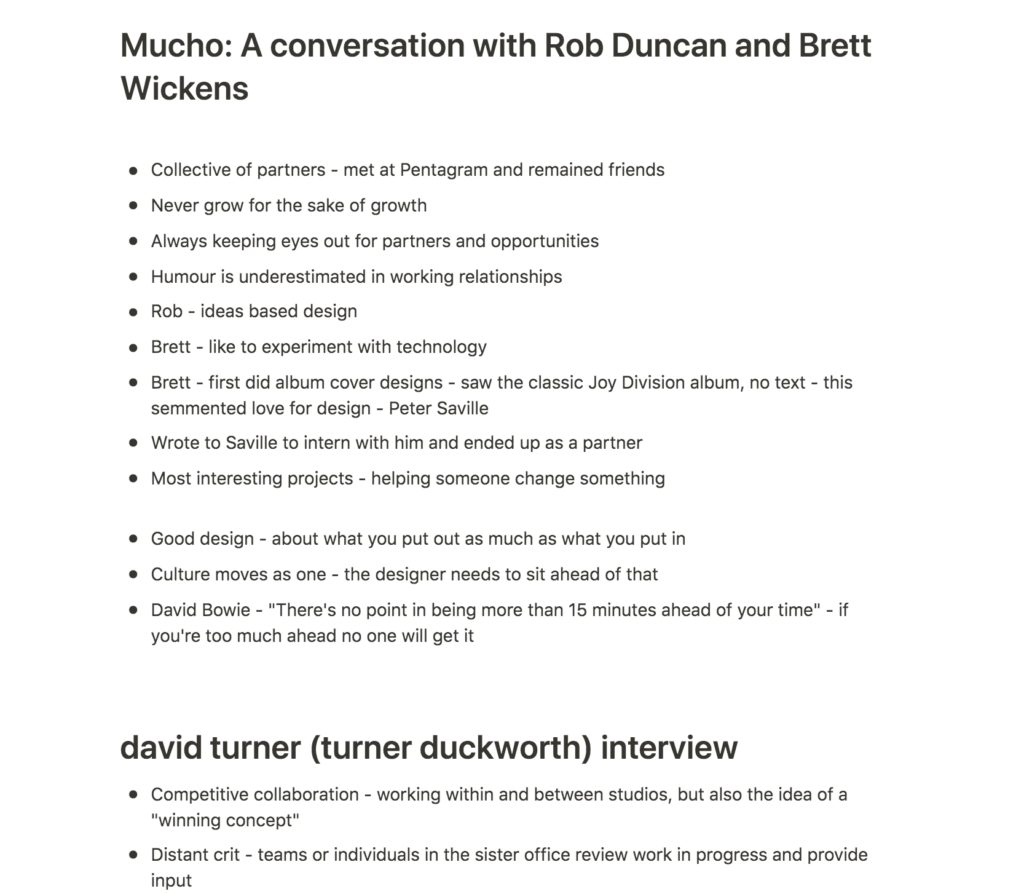
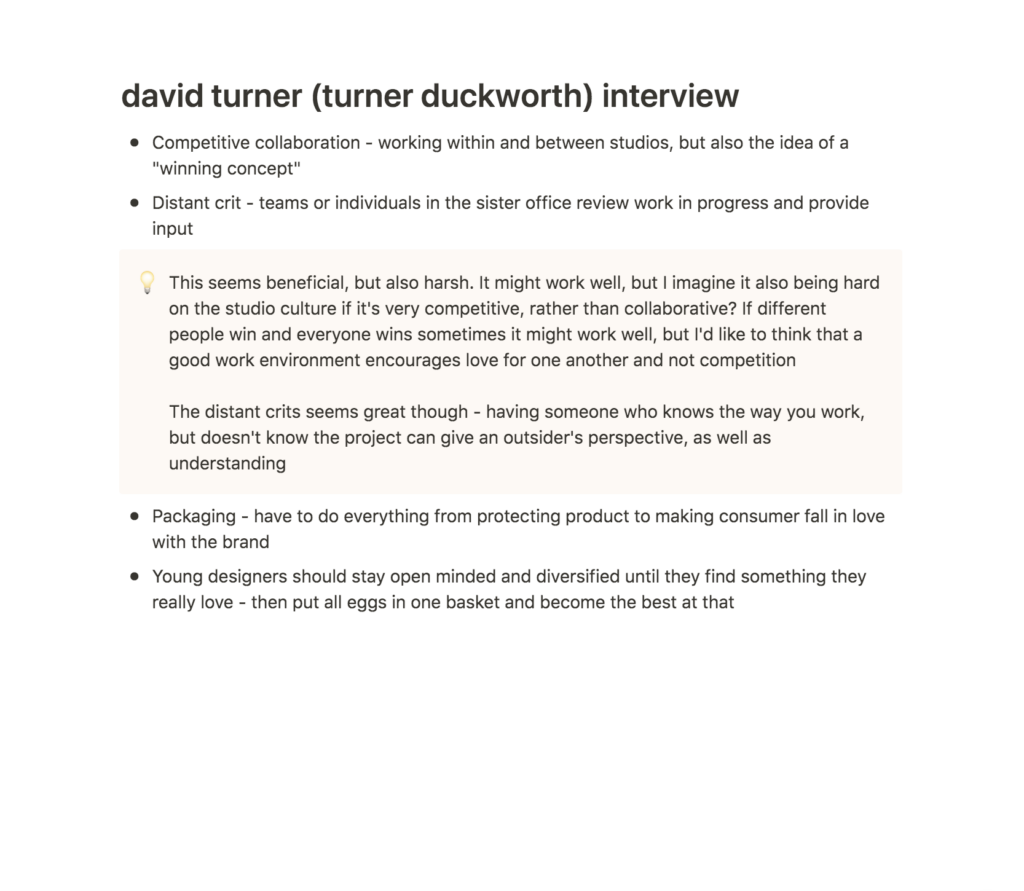
Resource reflections
David Turner interview – Designboom
Although I’m sure competitive collaboration (discussed by Turner in his interview) helps the Turner Duckworth team come up with great design, I’m a little sceptical to what this work culture does to the work environment. I might be overly sensitive or interpreting the process wrong, but to me, creating a winner/looser environment within a design studio seems worrying as I imagine it might lead to people not wanting to put their “bad” ideas forward. If the same people keeps winning the concept pitches each time, tension and differentiation between designers might evolve, which I personally wouldn’t want in a studio. I’d like to think that there’s a way of making good design within a work environment which encourages love and compassion for one another, rather than competition.
The distant crit sessions however, seems like a great idea. Having someone who knows your field, but who’s not involved with the project can give great feedback, particularly if something doesn’t make enough sense.
Further research
Kellenberger–White: Tillingham Wines identity
Although I can’t say for certain that Kellenberger-White has collaborated with their client on the typography development for the Tillingham Wines identity, I’d at least like to think so. The way they’ve translated various types of handwriting into modern letterforms is beautiful, and the organic sense of the letters also matches the organicness of the wines. If the writing is based on art made by the business employees, the identity reflects the business even further, which is particularly beautiful, considering wine making is a hands on craft.
Since I’m very into branding and typography, I’d love to look at how one might go about involving stakeholders and employees from a business in the branding identity development, with a focus on typography. I’m a big fan of tactility translated to screen, and it could be cool to look at ways of collaborating by getting the collaborator to produce handwritten text, which I could then interpret and shape digitally.
Hato: Riso from home kit
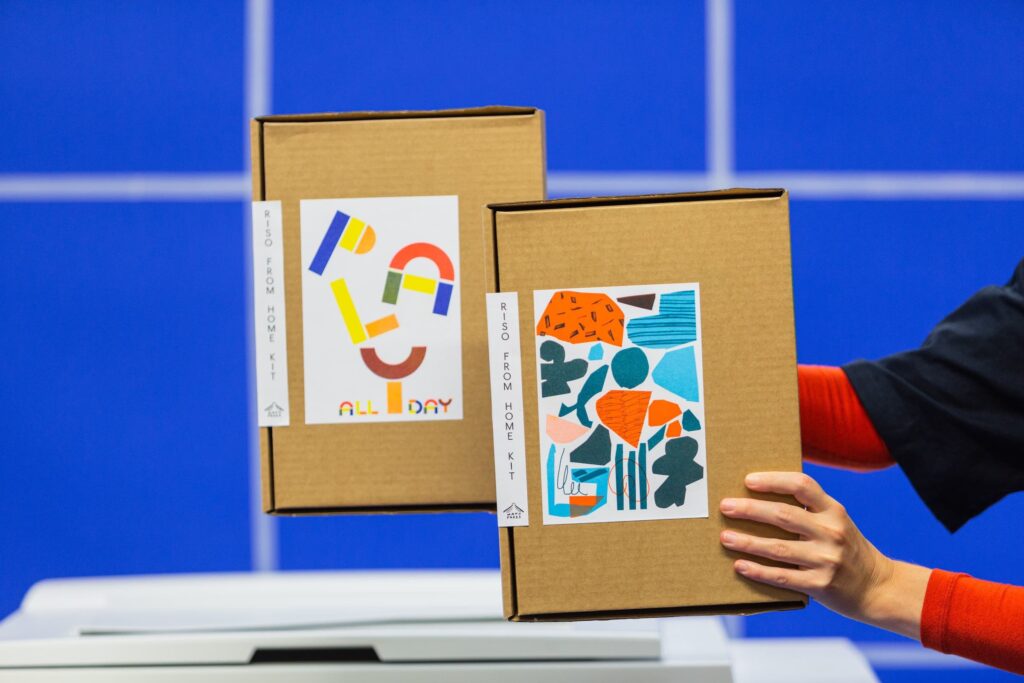
Hato’s riso from home kit is a great example of collaboration, where people can buy art works which they have to make physically before receiving it. You purchase a kit from their shop, which you then use to create your art work. The art work is sent back to Hato, who prints it and sends it back to the buyer. This is such a lovely way of selling art, but also model of collaboration.
The shipping part of this is something I’d like to look at if I was to involve other Falmouth students. Perhaps everyone could create a physical piece of typography, which they could send back to me via mail for me to translate digitally?
Eye on design: Go Ahead and Judge Natural Wine by Its Label
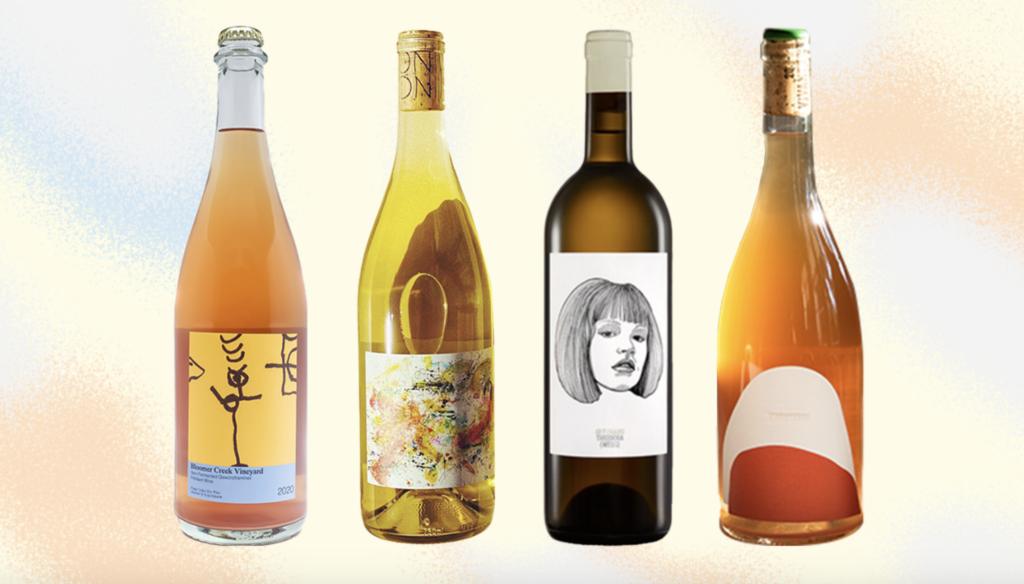
In the Aiga article, Go Ahead and Judge Natural Wine by Its Label, there are some great insight on developing design through collaborating with non-designers. As part of a discussion on natural wine labels, Katherine Clary explains how some labels are created by non-designers who doesn’t know about type design and trends (Abigail Glasgow, 2021). In a time where a lot of the graphic design is looking very similar, this is an interesting point. What was to happen for example, if we were to hand over InDesign to stakeholders of a company? Or simply a crayon and a piece of paper?
Jason Edward Charles who works at Vinca Minor also suggests to get your kid to draw the illustrations.
Workshop challenge
I started the workshop challenge by noting down my ideas on paper, that had spurred out from this week’s material. This also let me reflect further on some of the ideas, as well as the design process and what might make it easier to collaborate on this. Over the last two weeks I have been very inspired by HATO and Kellenberger-White’s collaboration processes. This led me to look at community processes focused on collaboration with larger groups of people.
Through my written reflections I realised that I was interested in focusing on two areas:
1. Collaborative visual development rooted in crafts
Inspired by Kellenberger-White’s process described in a previous lecture, I got interested in ways of involving a community in typeface design. I am also interested in the dynamics of making a digital typeface out of physical visuals. I imagine this process leading to a community gathering result, but also unique visuals that stray from design trends (as suggested in the AIGA wine label article). A focus question for this direction could be: How can we use a craft oriented process to involve a community in visual development, in order to create a unique design that is community reflective and disclaims design trends?
2. Encouraging collaboration across the Falmouth Flexible courses
As mentioned in my lecture reflections, I’d be interested in looking at collaborative tools that could make it easier for Falmouth Flexible students to collaborate. Being online students, it’s slightly harder to make connections, and so it could be interesting to look at tackling this issue. This could be a very specific tools which, for example, would let students find each other based on interests and skills, or it could be a more subtle initiative like a Flexible book, exhibition or reference pin board.
Taking the ideas further
Having established my focus points, I went on to develop the ideas further through possible solutions. I continued with my method of pen and paper brainstorming, as I find that this helps me produce several ideas quickly.
Below is a summary of my favourite ideas
Making the discovery face collaborative and crafts based
As part of the discovery phase with a client, it’s normal to do a workshop/interview where you get to know the brand and the client better. As a way of including the client/community in the visual development of a project, I would do a crafts based workshop where the participants have to answer a question (e.g. “who is *brand*?”). Rather than using post-its or one’s physical voice, the participants use crafts to create their answers. This could be one specific craft for the particular workshop, like paint, collage or clay (this would lead to consistency in visual pieces), or the choice of craft could be up to each participant. As stated in previous lectures, one have to trust the process when using co-creation methods, and thus the goal would only really be to understand the client better than before the workshop. However, I would preferably aim to use the answers and visuals to create a visual piece which could inform the project moving forward. By using non-designers, I would hopefully be led in a non-trend direction in my work.
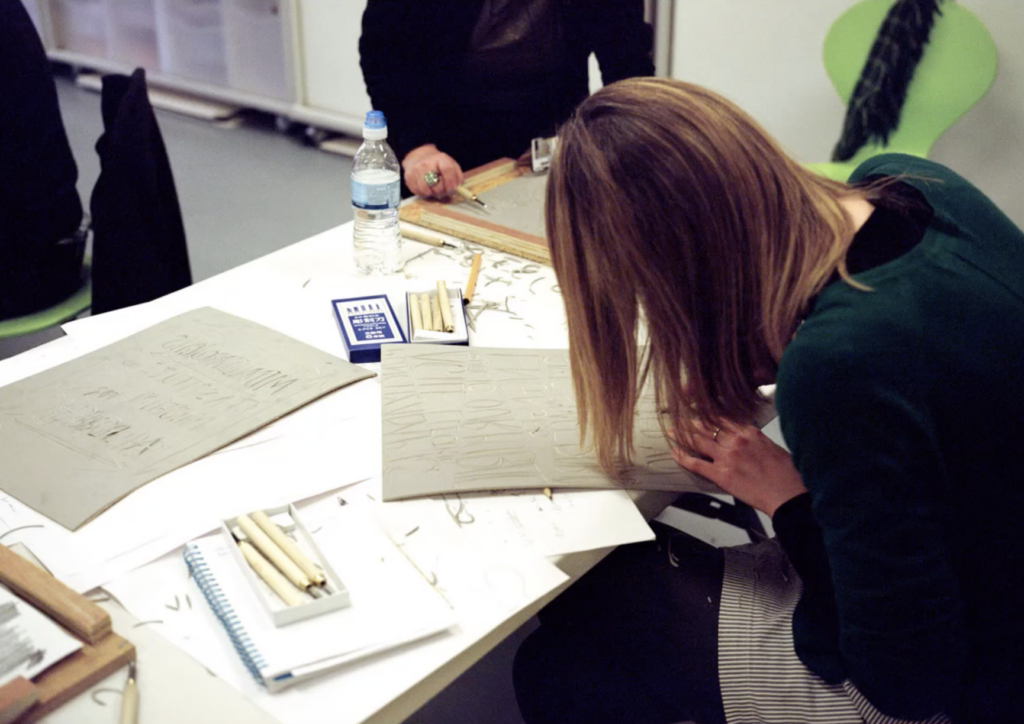
Even if I wouldn’t end up using visuals from the workshop in a project, I still think this method could enhance collaborative work. By asking non-designers to be creative, I’m imagining that clients and stake-holders would loosen up, and perhaps we could also get to know each other better. As Paul mentioned to me in this week’s tutorial, it might also remove any hierarchy between the client and myself, but also between leaders and non-leaders in the client’s business.
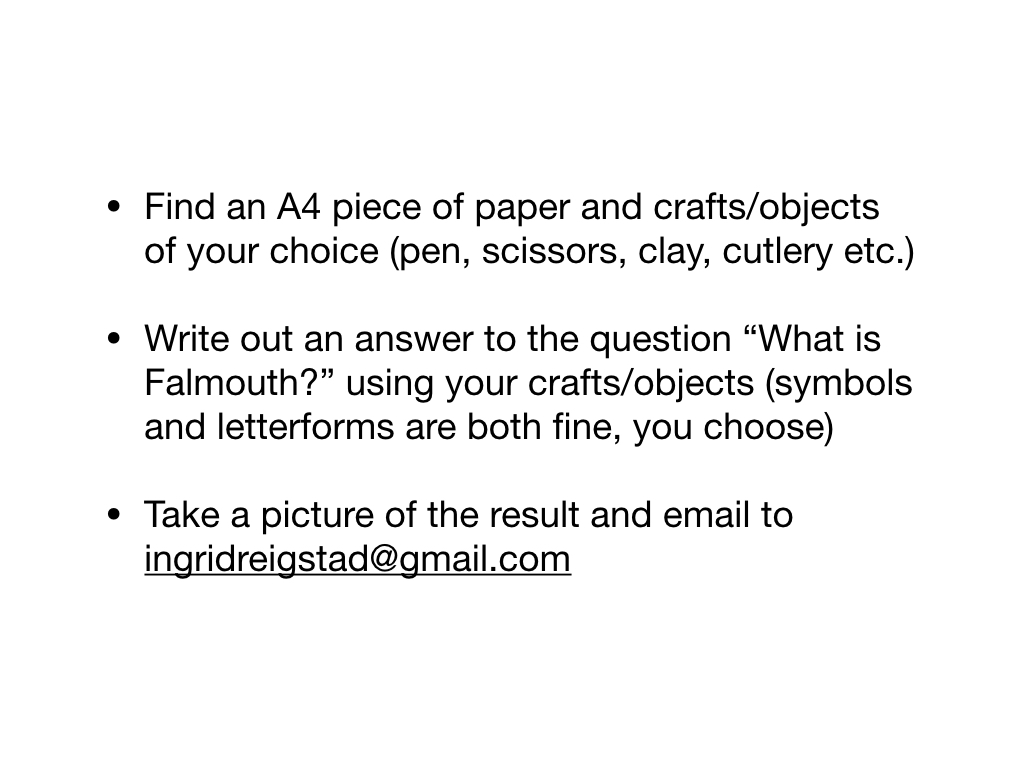
For this particular project, I’d be interested in involving Falmouth Flexible students, with the aim of creating a visual piece that represents us as a group, as well as what it means to do an online course. This would also lead to a collaboration across the Flexible courses, and thus be relevant to both of my focus points. Above are the instructions I’d give students in the workshop.
Multi-disciplinary crit sessions
In order to make network with other Flex-students, we could arrange regular crit sessions across courses. This way we could have multi-disciplinary discussions about our work and get insights on our ongoing projects from people with other perspectives that those from our own peers and tutors. Another perk would be that we could make connections for future collaborative projects, and perhaps learn about models and principles from other fields.
I also imagine this idea working on in a global context outside of Falmouth University. Crit events could be hosted regularly and creatives from all over the world could join in.
Digital collaborator search
In order to explore work by students from other Falmouth courses, I could create a digital platform where people could share their work and state their interests. This could be visually based and the aim would be to make it easy to discover potential collaborators for future projects (similar to Behance, but more interest based and developed for Falmouth students). Today, Falmouth has a CoLab, where students can post projects and search for collaborators. This is great, but it doesn’t have features which lets you find people based on their works (it has to be project based and it’s not visual). Thus, this project could be a prototype extension to CoLabs.
Pen pal book or exhibition
Another way of collaborating with Flex-students would be to set up an exhibition or book together. I got the idea of shipping an empty book between us globally, so that everyone could fill a page each. This would then result in a pen pal diary book which could be printed or made into an exhibition. Even though this idea seemed to generate the most engagement on the ideas wall, this would take too long within our project time frame due to shipping time.
Video development
For my pitch video (and next week’s project) I decided to focus on my collaborative discovery phase idea. I liked the fact that it’s relevant for both of my focus points, and it’s also the one that I’m most curious about experimenting with. I hope to work with branding in the future, and collaborative methods where the client could be more involved would be highly relevant for my future practice.
I decided to use a format of voice recording and presentation slides as I wanted to save time, so that I could focus on generating ideas this week. For imagery I tried to create some quick recordings in order to illustrate the concepts I discuss. I also used images from Kellenberger-White’s presentation from week 5’s lecture, as this was my main inspiration in terms of collaborative process.
Final result
Over the last couple of weeks I’ve been very inspired by Hato and Kellenberger-White’s methods in terms of working with co-creation. My final idea is therefore to look at ways of including a community in a visual development process, which could also let you learn more about that community at the same time.
The collaborative model would be inspired by the discovery phase of the double diamond, and how we might go about introducing a collaborative craft-based workshop into this. I would like to host digital workshops across courses, in order to create a multi-disciplinary collaboration. Participants would answer the question “What is Falmouth?” Using crafts or objects from their homes.
Although the main aim of this workshop method would be to gain insight for a project, in this case making a visual piece that represents Falmouth Flexible and digital learning, it would be beneficial if the workshop results could be used as visual inspiration, directly affecting the final visual piece.
This outcome could be a typeface, a logo, a design system, a film or something else, all depending on the participants’ deliveries. I’d also like to look at ways of making my outcome collaborative, for example by letting viewers alter it in some way. This again would depend on the results from the workshops. Below is my final elevator pitch video presentation, where I explain these ideas along with presentation slides.
In conclusion
It’s been great to have a week of idea generation, as this is something I love. Looking back, I probably could have spent more time researching and detecting collaboration issues, in order to think of more ideas. However, I was able to establish one idea that I’m really excited about, which suits my future goals of working with branding.
If I had more time I would have liked to test my ideas before creating the elevator pitch. I currently have an arrangement to test the workshop during this week’s webinar, but it would have been great to do a couple of tests even earlier. I think it will be important for my final piece to host at least two workshops, in order to fix any issues for the second one. I’m not sure wether the best results would come from using one craft method or from letting the participants choose a method themselves, so I will make sure to analyse this during the first workshop.
What I like about the tool I’m using, is that I think it has potential to let participants have fun and relax, whilst also generating insights. I also like that it’s quite versatile and that I wouldn’t necessarily have to use the visuals if they don’t work, as collecting insight is the main aim of the workshop. The final piece could be a direct translation of workshop results, or it could be a more ambiguous interpretation.
I do wish the digital version of the workshop could have facilitated for getting to know each other to a larger extent. If the participants ends up presenting their work, they will get an impression of each other, but (at least with larger attendances) unfortunately the process doesn’t encourage one to one discussions. However, I still like the idea of creating a result which reflects collaboration, and I hope that my final outcome for the project ends up creating a sense of unity that might lead to further collaboration in the future.
REFERENCES:
Abigail Glasgow (2021) ‘Go Ahead and Judge Natural Wine by Its Label’, AIGA Eye on Design, 5 April. Available at: https://eyeondesign.aiga.org/go-ahead-and-judge-natural-wine-by-its-label/ (Accessed: 12 July 2021).
Alec Dudson, Axel Peemoeller, and Rita Matos (2021) ‘Part 2: Featuring: Axel Peemoeller and Rita Matos, New Studio’. Canvas Falmouth Flexible [online], 9 July.
Alec Dudson and Kenjiro Kirton (2021) ‘Part 1: Featuring: Kenjiro Kirton Hato’. Canvas Falmouth Flexible [online], 9 July.
Andy Butler (2012) ‘david turner (turner duckworth) interview’, Designboom, 6 July. Available at: https://www.designboom.com/design/david-turner-turner-duckworth-interview/ (Accessed: 12 July 2021).
Simon Manchipp et al. (2021) ‘Industry Practitioner Case Studies’. Canvas Falmouth Flexible [online], 9 July.
LIST OF FIGURES:
Figure 1. HATO. Ca. 2015-2021. Elfstedentocht 3. Hato Press [online]. Available at: https://hatopress.net/printing/
Figure 2. NEW STUDIO. 2021. The Brooklyn Circus. New Studio [online]. Available at: https://newstudio.studio/
Figure 3-5. KELLENBERGER-WHITE. 2017. Tillingham Wines identity. Kellenberger-White [online]. Available at: https://kellenberger-white.com/project/tillingham-wines/
Figure 6. HATO. Ca. 2020-2021. Riso From Home Kit. Hato Press [online]. Available at: https://hatopress.net/workshops
Figure 7. Beatrice SALA. Ca. 2020-2021. Wine Labels. AIGA Eye on Design [online]. Available at: https://eyeondesign.aiga.org/go-ahead-and-judge-natural-wine-by-its-label/#:post_79697
Figure 8. KELLENBERGER-WHITE. 2016. MIMA identity. Falmouth Flexible MA Design [online]. Available at: https://flex.falmouth.ac.uk/courses/897/pages/week-5-lecture-collaboration-case-studies?module_item_id=50669
Figure 9: Ingrid REIGSTAD. 2021. Elevator Pitch Week 7. Private collection: Ingrid Reigstad.
